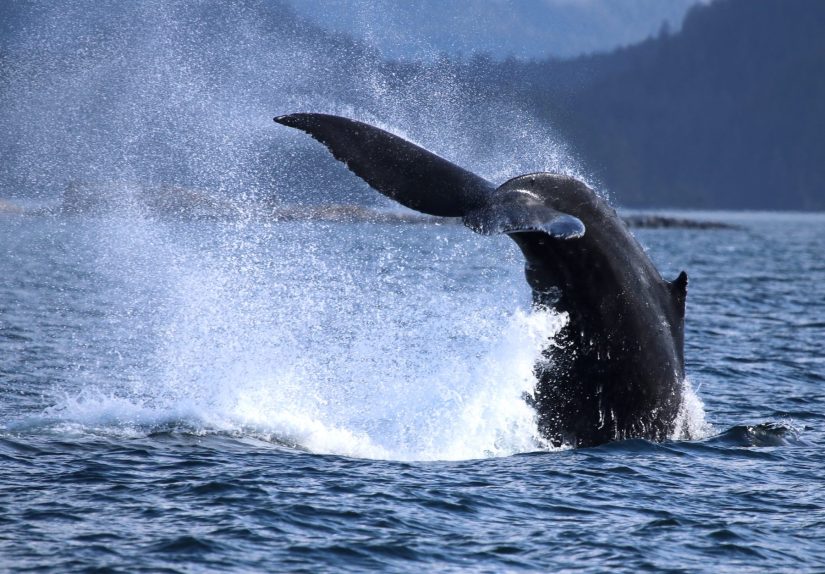Rapid increase rates in large whale populations continue until they near carrying capacity
In a new study challenging conventional thinking about how populations of large baleen whales recover from whaling, researchers have revealed that populations continue increasing rapidly for a wide range of recovery levels, only slowing once approaching pre-whaling levels. This could have wide implications for how agencies from across the world manage whale populations, and when we think a population has fully recovered from overexploitation.
Published in July 2024 in the Journal of Applied Ecology, the team used whale abundance data from bowhead, gray and humpback whales, focusing on populations with long-term studies that covered a wide range of abundance levels from low to high. The collaborative research team was comprised of Dr. Yu Kanaji (Fisheries Resources Institute, Japan Fisheries Research and Education Agency), Dr. Rob Williams (Oceans Initiative), Dr. Alex Zerbini (Cooperative Institute for Climate, Ocean and Ecosystem Studies (CICOES) at the University of Washington, NOAA Alaska Fisheries Science Center, and Marine Ecology and Telemetry Research), and Professor Trevor Branch (University of Washington School of Aquatic and Fishery Sciences). They demonstrated that recovery levels are more rapid than previously thought. Before now, the prevailing thought was that population growth slows quickly as populations rebuild.

Standard ecological theory, also known as density dependence, holds that as populations increase, they compete more for food, and eventually it gets harder to find food, resulting in slower growth in body size, lower survival, and lower birth rates, all of which result in slower population recovery at higher abundance. This theory has resulted in the International Whaling Commission (IWC) designating 60% as the minimum target for whale recovery, basing this off thinking that whale populations increase in numbers most rapidly at 60% of pre-whaling abundance. The new study shows that, on average, 80% is a more reflective figure for large whales, with recovery rates being high over a wide range of abundance levels.
This study changes global thinking about whale recovery and management, with the research team expecting whale populations to recover at rapid rates over a much wider range of abundance levels, plus a longer time period to reach management targets if the target increases from 60% to 80%.
The study, sixteen years in the making, started off at a Scientific Committee of the IWC in 2008, where scientists Alex Zerbini and Trevor Branch wondered if it was reasonable for the IWC to assume that recovery slows down as populations increase. Rob Williams then tracked down the history of this concept as used by the IWC. Fast forward a few years with key contributions from Felipe Hurtado-Ferro and a visit by lead author Yu Kanaji to the University of Washington in 2019-2020, and the project was completed.
Using estimates of abundance in each year, the team focused on four whale populations that have a long time series of data: bowhead whales in the Arctic Bering-Chukchi-Beaufort Seas, gray whales in the eastern North Pacific, and humpback whales in the eastern North Pacific and eastern Australia.

They fit sophisticated Bayesian models to these data to estimate not just the rate of recovery, but also how that rate changes with abundance, which is where the difficulty comes in. Little is known about where density dependence operates: does it affect recovery at low, medium, or only high abundance levels? It requires very good data to estimate changes in recovery rates, and these kinds of data are very hard to come by. By fitting the models to the data, they could estimate how much whale recovery rates slow down as the population increases.
The new results have multiple implications for the management of whale populations, beyond the expectation that increase rates remain high across a broad range of population sizes. In particular, the research team suggests that international recovery targets, currently set at 60% of pre-whaling levels, should be increased to a default of 80%, since this is where maximum population increase occurs.